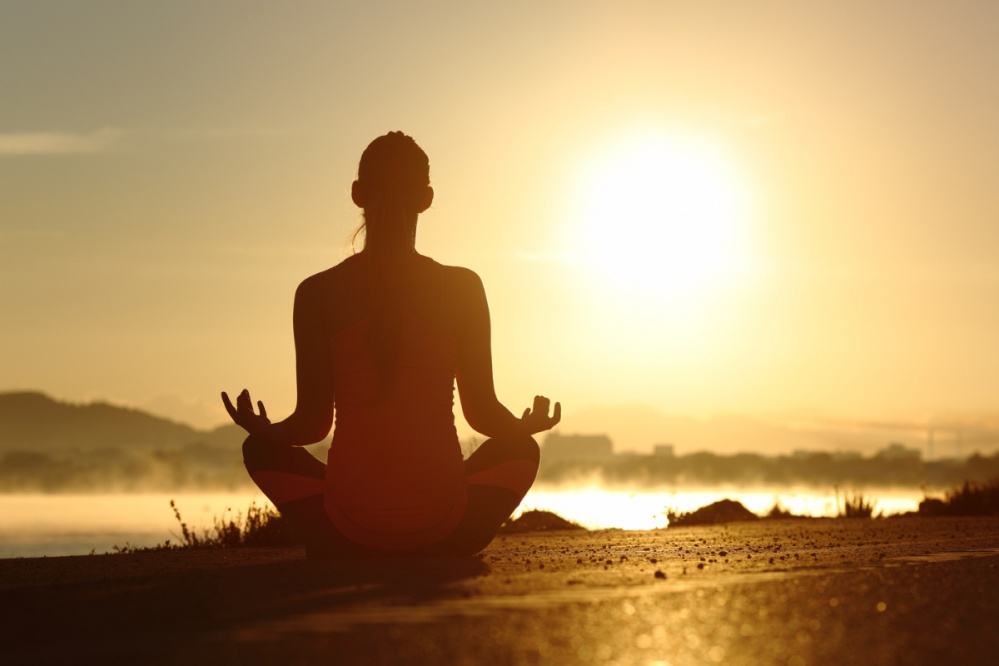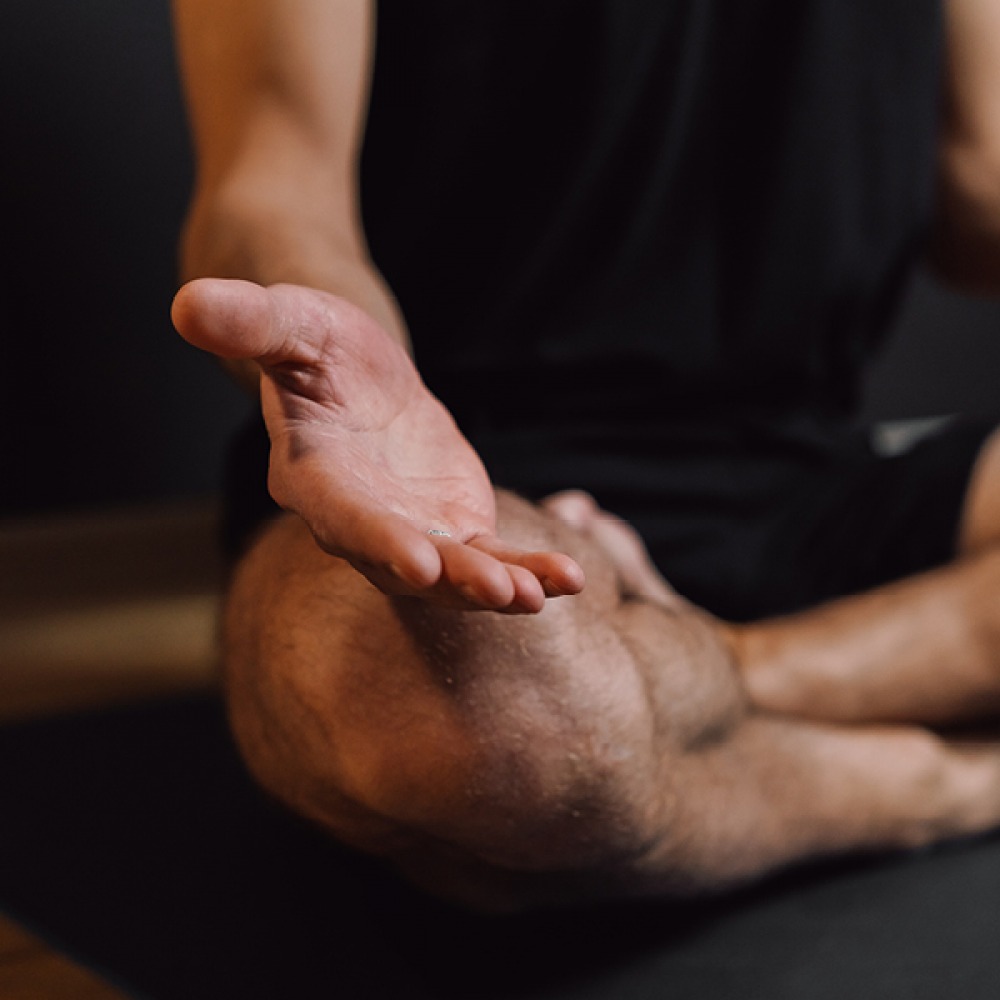How to Live with Less Stress by Just Breathing

Research shows that by concentrating on your breathing you can significantly reduce stress, increase your energy levels and reduce your blood pressure. Read on to find out more about the simplest way to live with less stress
Many of us breathe ineffectively, and stress and anxiety can further impinge on our breathing as stress leads to tension, which leads to restricted breath, reduced oxygen, increased carbon dioxide and more stress on the body. It’s a vicious circle.
Bad posture also restricts your breathing and creates more stress within the body.
However, the good news is that the physical benefits of deep breathing are immediate; your heart rate slows, as does your blood pressure, your neck and chest muscles relax and your body can absorb more oxygen into vital cells and organs.
Add to that a combination of increased body awareness and gentle movements and you have something called sophrology, created by Spanish neuropsychiatrist Professor Alfonso Caycedo, who was searching for an effective way to help traumatised victims of the Spanish Civil War. After travelling to the Far East to study zen and yoga techniques, Professor Caycedo began to develop a technique known as sophrology, which aims to harmonise the body and the mind.
Read More: Our Wellness Guide to Beat the Winter Blues

‘Sophrology is a guided practice for the mind and body,’ explains Dominique Antiglio, author of The Life-Changing Power of Sophrology. ‘Using breathing techniques, gentle movement, relaxation and visualisation, a sophrologist will take you through a simple sequence of exercises helping you to connect with a sense of calm.’ The technique helps to create space between your feelings and your reactions, allowing you to distance yourself from negative thoughts and experiences.
This wellness trend is widely used in European hospitals, offered on maternity wards and to those being treated for sleep disorders as a way of reducing stress. ‘You are learning to tap into your inner resources to help you sleep better, deal positively with emotions, overcome anxiety or prepare for big events like exams, surgery, childbirth or a competition.
‘You can also use sophrology to cultivate a sense of wellbeing, balance and positivity in your daily life,’ Dominique explains.
Sophrology is also widely practised in European schools to prepare children before stressful exams, to help improve their concentration and behaviour. In fact, sophrology is so popular that there are multiple sophrology training schools in Europe, and one in the UK. There have even been rumours that the French rugby team are fans of the practice, using it to boost their pre-match concentration (given their on-field performance last season something certainly has helped!).
Unlike other wellness trends, sophrology doesn’t involve downloading an app, listening to relaxing sounds or splashing out on the latest gadgets. All it requires is a few minutes of your day to spend on varying breathing techniques and some simple body movements.
‘Sophrology always starts by being guided through a body scan, where you focus on individual parts of your body, so you can relax and connect with your body and mind. Often the breath is used to release tensions by consciously exhaling tensions from each region of the body,’ explains Dominique.
‘You may then be asked to gently engage with some standing movements like turning your head, or stretching your arms above your head, combined with retaining air for a few seconds. These simple moves are great to help you be more in tune with your body and also help your mind to focus,’ Dominique continues.
‘Tap into your inner resources to help you sleep better, deal positively with emotions, overcome anxiety or prepare for big events‘
Read More: Silent Heart Attack Signs to Look Out For as Cases Rise Among Younger Women

‘Going back to sitting, you may be guided through a positive visualisation in relation to an event you are preparing, or a sense of confidence you want to stimulate. The alternation of standing and sitting exercises, where you move or consciously pause, are all designed to help you let go of tension, calm, and positively connect.’
Sophrology is a useful a tool to help fight anxiety over future events. By visualising something in the future, your body and mind can prepare for what it might be like, giving you more confidence and reducing anxiety by tricking the mind into believing it’s already experienced the event.
‘After a session, you are usually calmer and more grounded,’ explains Dominique. ‘A lot of my clients report feeling lighter, more empowered and in control or being able to fall asleep faster. As you learn to decrease the stress in your body and manage it better, sophrology will bring whole range of benefits, like balancing your energy levels, finding more motivation and being more productive, and dealing with life in a different way.’
Sophrology doesn’t have to be practised every day, but it is more beneficial when practised regularly. Once you become used to the techniques, they can easily be incorporated into your morning or evening routine. ‘I encourage people to practice daily, even for 10 minutes. Those 10 minutes you take to positively connect with yourself and find inner strength are, over time, giving you access to new possibilities in your life,’ says Dominique.
For those who practice sophrology regularly, there are 12 progressive levels to work through, tackling different issues from understanding your body to focusing energy and tuning into your new-found freedom. Want to learn? There are short online courses available which will take you through easy step-by-step practices to do anywhere at any time, including be-sophro.com which is a five-day course teaching you all the essential tools you need to practice on your own, at the end of which you join a live session with expert Dominique.
So whether you choose to incorporate a few simple breathing techniques into your daily routine, or fancy trying out all 12 levels, sophrology could be your key to a stress-free life.
The Life-Changing Power of Sophrology by Dominique Antiglio, £14.99 Amazon
Step 1
Inhale. Bring your arms out in front of you with clenched fists.
Step 2
Hold your breath, tense all your muscles and acknowledge the tension you feel.
Step 3
Exhale. Release your body and acknowledge the sensation of relaxation. Repeat as many times as needed until you feel relaxed.
• Fix your posture. Sit up and keep your shoulders back so you can create the space your diaphragm needs to breathe effectively.
• You need to breathe using your diaphragm, not just your chest. To know if you are breathing properly lie on your back, place a hand on your tummy and breathe in and out. Your hand should move up and down as your diaphragm expands and contracts. Not feeling it? You are not breathing deeply enough and are letting your chest do all the work.
• The counting method is a tried and tested way of reducing immediate stress and tension, and it will help you get to sleep too. Close your eyes, breath in for a count of four, hold your breath for a count of four and then let the breath go to a count of seven. Keep going until you feel calmer (or you are asleep!).










